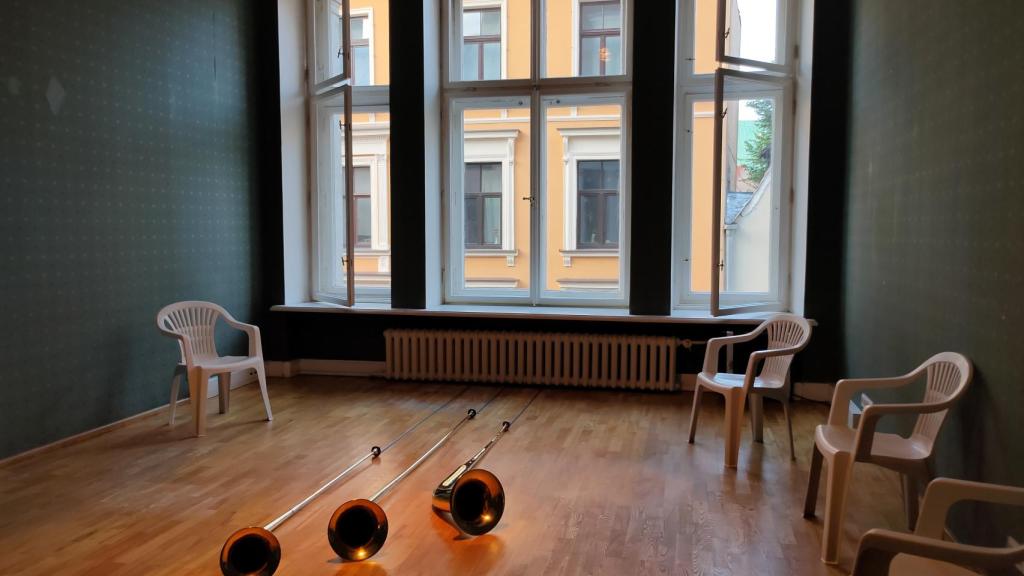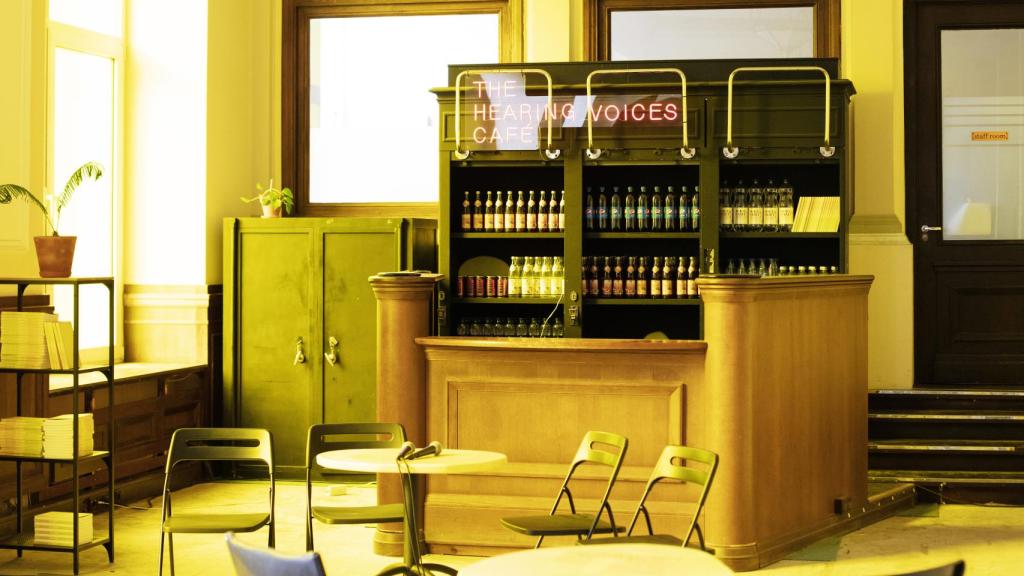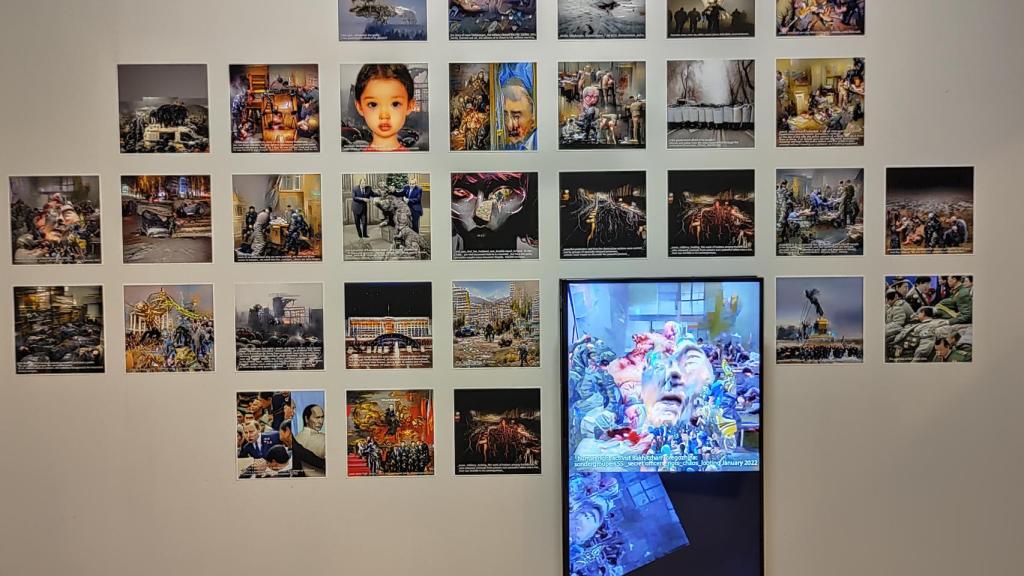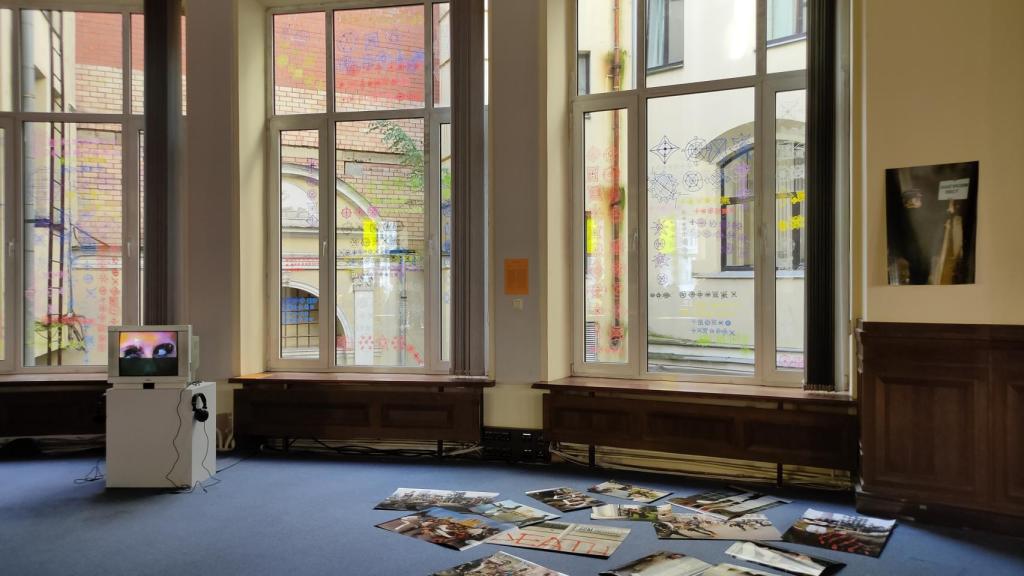Advertisements
[ad_1]
They call it a festival, but it is a single exhibition accompanied by a program of activities. The budget is tight and the numbers are modest: 31 artists, forecast of 10,000 visitors. However, I doubt that a more significant art event is taking place in Europe today.
If you were shocked by the invasion of Ukraine, imagine the impact this historic turning point had on the Baltics, still struggling with a very recent past of Soviet domination.
Latvia has only been an independent country since 1991. It is in the process of rebuilding a national identity in which the arts and, above all, language are cardinal. But 50% of the population of Riga speaks Russian and the party that represents this community, Saskaņa (Harmony), has the most votes in the state parliament –although it has never governed–, it has almost a quarter of the seats.
The exhibition, conceived before the Russian aggression, gained an unexpected dimension after
Historical heritage can be the scene of conflicts: A few days before the release of the Survival Kit, the Victory Monument (of the Red Army against the Nazis) was demolished, much to the anger of pro-Russians and the Kremlin.
Also the current creation: the ambitious biennial that the city launched a few years ago and which should have celebrated its third edition in 2022, RIBOCA, has perhaps been “postponed” otherwise die: it was a Russian project, implemented by the daughter of a tycoon of fishing and methanol, Gennady Mirgorodsky, and from the beginning raised many suspicions that have now become difficult obstacles to overcome.

Andrius Arutiunian: 'Arizona Club'
Survival kitwhich is now in its 13th edition and was born as an artistic program to revitalize the city's spaces in times of acute economic crisis, is organized by the Center for Contemporary Art of Latvia (successor here to George Soros' transnational foundation) and is almost like everything in Riga fruit of private initiative.
With a handful of small galleries, a few notable art centers (Kim?, and a municipal hall, Rīgas mākslas telpa), and a collector-created museum, the Zuzeum, the art scene is more than precarious.
There is no public museum of contemporary art – although it is already planned – and the existing institutions are dedicated to ancient art – the worthy National Museum, with several branches – or to the memory of the country's harsh vicissitudes in the 20th century. In Riga there are museums about the war, the Soviet occupation, the KGB, the barricades, the crimes of the Nazis and collaborators against the Jews...
Cultural action in Latvia goes hand in hand with national affirmation and the defense of democracy and freedoms. And that's exactly what he takes care of The little bird must be caught (“The little bird must be captured”, verse from a poem by Ojārs Vācietis), the exhibition that the Greek curator iLiana Fokianaki It was conceived before the Russian aggression and gained an unexpected scope after it.

Dora García: 'The cafe of voices'
The concept is very well done and very inspiring: from the “singing revolution” – based on the festivals of folk dances and songs – that led to independence in 1991, the objective is to show how resistance to oppression and authoritarianism often adopts a sound package, whether in words or music, and how its silence resonates through of censorship.
Even with only three living Latvian artists (compared to four Greeks, with unremarkable works) and a single Ukrainian, the set openly alludes to the current circumstances in Ukraine and the risks in the Balticsbut it also collects experiences in other areas with restricted freedoms and lets us hear the bitterness of exile and the struggle for the survival of cultures.
The festival shows how resistance to oppression and authoritarianism often adopts a sound package
In the old Banco de la Bolsa building (for sale), the works are barely visible on the open ground floor, where the a new edition of the cafe of voices by Dora Garcia (Spain) –which will be a meeting point, it is intended, for the Ukrainian refugee community–, but on the first floor they enjoy individualized spaces in offices and bedrooms, of which only the many safes remain.
Few works were produced for the exhibition, but all but a few “pioneer” artists are recent and mostly relevant. I will highlight a few. Purely sonorous are only those of Lauren Prouvost (France), Susan Philipsz (Scotland)which fits poorly due to its content but is so beautiful…, and Kapwani Kiwanga (Canada).

Almagul Menlibayeva: 'IA Realism. Qantar'
Expression in prohibited languages is handled by Anton Vidokle (Russia) in a film that transports the epic of Gilgamesh, capriciously feminized, to the Kurds and Turkey, and therefore Rojava Film Commune (Syria)which documents in a lyrical tone how traditional song, also Kurdish, is protected in that region – a matter of cultural life or death.
The role of music and singing in colonial processes is addressed by Sammy Baloji (DR Congo)which relates acculturation through religion – with one of its bases in choirs – and copper extraction, and Andrius Arutiunian (Lithuania) gives form to a sound sculptural installation of a case of cultural transfer through music: the “importation” of forty orphans of the Armenian genocide from Jerusalem to Addis Ababa, where they founded a tradition of wind instruments that would give rise to Ethiopian jazz.
Kristaps Epners (Latvia) collects the ecclesiastical song of a religious community, the Old Believers, exiled from Russia in the 17th century, introducing a necessary local accent into the exhibition, and Raed Yassin (Lebanon) it affects the communicative potential of music even when it is just humming.
One of the most impressive works in the exhibition is that of Indrė Šerpytytė (Lithuania): The collage of videos taken from social media of soldiers – young men with high levels of testosterone – dancing provocatively in front of the camera as if they were go-go dancers when in fact they are cannon fodder.

On the floor, works by Hardijs Ledinš and Juris Boiko: 'Dr. Enesers's Binocular Dance Lessons' and 'Farewell to the Empire'. In the windows, Chrysanthi Koumianaki: 'Down with the abstract. Long live the ephemeral!'
Media overexposure has its counterpoint in the censorship and silencing used by authoritarian regimes, from the witch hunts that evoke Sanja Ivekovic (Croatia) to the extremely moving manifestations of the limitations imposed on communication and physical contact between men and women that it detects Maryam Tafakory (Iran) in the cinema of your country.
Silence of information is denounced by Almagul Menlibayeva (Kazakhstan) and for Forensic Architecture (UK)It is Candice Breitz (South Africa) somatizes the directly and indirectly racist speeches that flood televisions.
What else is there to say? Kriss Salmanis (Latvia), like so many, has no words. His response is emotional and silent. A wave of whispers and an almost inaudible, very slow drip, which translates anxiously waiting for the end of the war.



